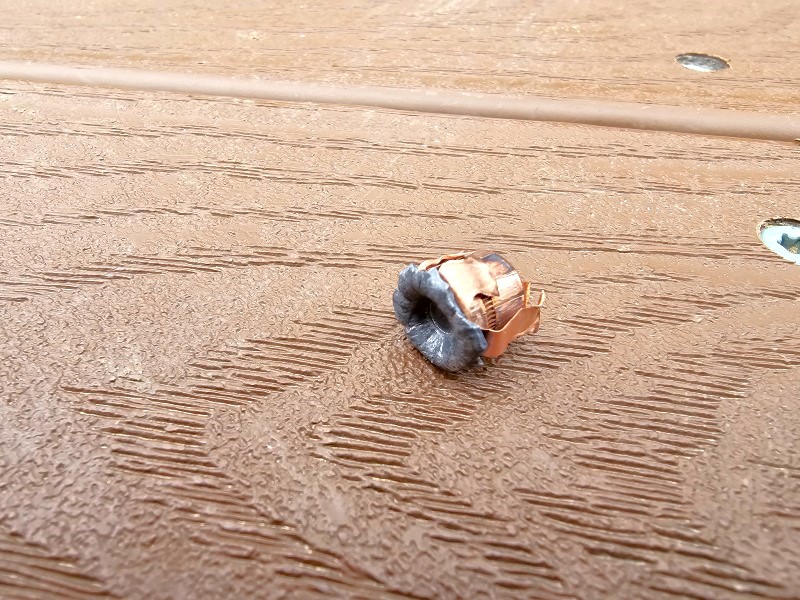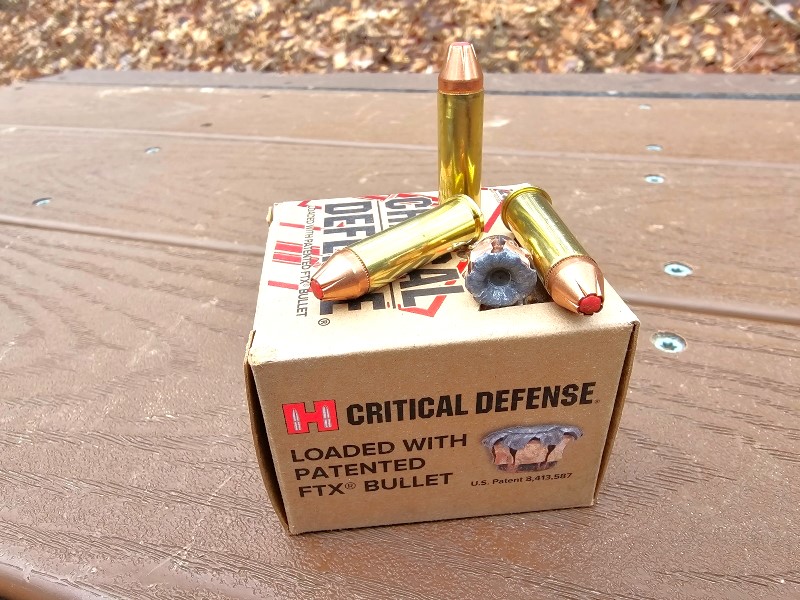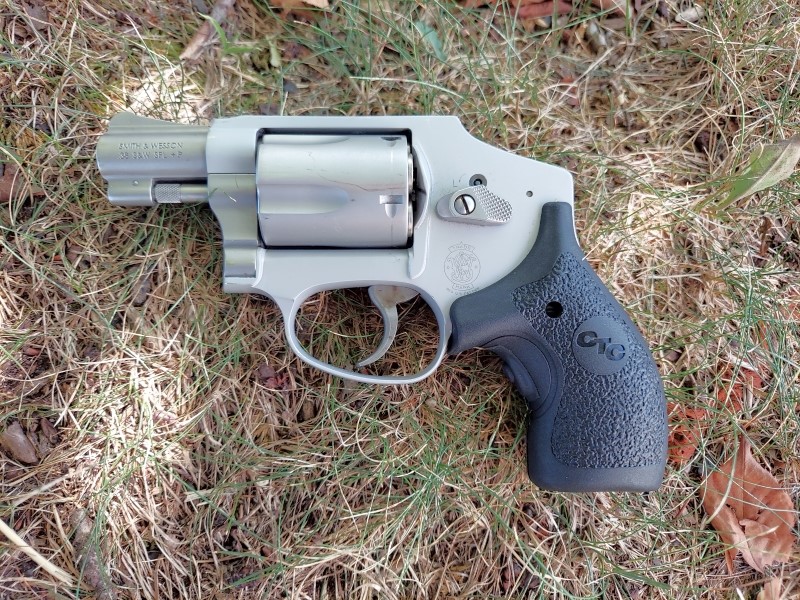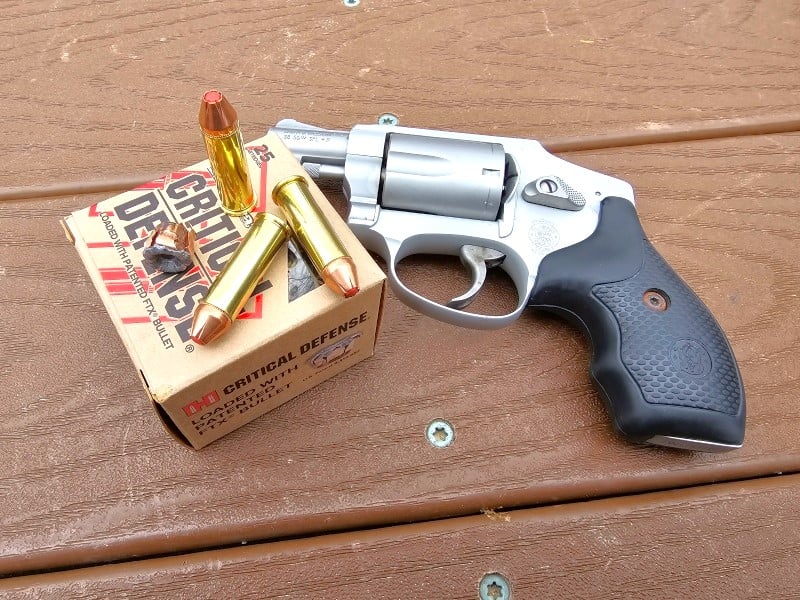The shooting community has come to trust the Hornady brand throughout the decades, and with good reason. Their ammo and components are outstanding. Over the years, I’ve used and reviewed many various rounds from Hornady, and it has all proven to be top-notch ammunition. Today, we’ll look at their Critical Defense .38 Special 110-Grain bullets. Not long ago, I also reviewed Hornady’s Critical Duty 9mm 135-grain ammunition, which is excellent ammo. Both projectiles utilize a similar projectile, which I’ll explain very shortly.
Normally, I prefer a bit heavier projectile than 110 grains for defensive use in the .38 Special. Why? Penetration. More penetration allows the bullet to reach vital organs, which is crucial in stopping a hostile attacker in the unfortunate case we’d have to use our firearm in defense. So, how will these light-for-caliber 110-grain rounds do?
“Testing”
Not having any ballistic gelatin on hand with which to test the rounds, I decided to go another route. I used 1-gallon water-filled plastic jugs. Now, before readers fire up their computers and send me scathing emails about how water is not ballistic gelatin and how neither of those mediums is the same as a human body, I’m going to agree with you. They are not.
However, consider this: the human body is made up of as much as 75% water. So, shooting into water is not completely insane. I’ll admit that shooting into water jugs is really, really far from being a reliable scientific measure. That said, it can offer a very vague idea of how a bullet might perform in flesh. And water, being consistent, can give somewhat consistent repeatability as far as shooting rounds into it.
Yes, I’d have much rather had a more realistic medium to test out this ammo. However, there was one glaring problem: I found myself to be fresh out of spare bodies to shoot into! I checked with my neighbors, and none of them had any either, so I was simply out of luck. I mean, borrowing a corpse isn’t as easy as borrowing a cup of sugar from Mrs. Smith next door. It appeared that I was stuck with the water jugs.

And honestly, lacking gel, what other means do we have to do any sort of test on ammunition? Sure, we run rounds through our favorite weapons platform, shooting groups on paper. That proves accuracy and reliability, but that’s about it. So, the water jugs offer a little more information as to how the bullet acts when it hits something more substantial.
Frankly, I was surprised that this light 110-grain .38 round penetrated three water jugs; I expected less penetration. This penetration makes me feel more confident to carry this ammunition in my revolver.
Hornady Critical Defense Nomenclature
This Critical Defense ammo is brass cased. The red tip is immediately apparent, as it consists of a polymer Flex Tip, which does a couple of things for this ammo. First, it’s not technically a hollow point. The polymer ball in the tip won’t clog up with clothing material or building material to make the bullet act like an FMJ round as can happen to some hollow point ammo.

According to Hornady, Critical Defense ammo has powder that’s made for use even in very short barrels. An interesting side note is that, as this is written, Hornady announced that they temporarily suspended the use of nickel plating for the bullet cases (normally, they’re nickel-plated, but the rounds here are brass). Apparently, nickel is in short supply, and rather than stop producing ammo, they are simply using brass for the moment.
Hornady Critical Defense vs. Hornady Critical Duty
Hornady has Critical Defense ammo and Critical Duty ammo. They have differences and they are intended for different audiences.
Critical Defense ammo is intended for civilian defensive encounters and is optimized for use in short-barreled, concealed carry-type handguns. It’s not intended for barrier penetration like law enforcement ammunition is.
Critical Duty ammo is intended to be barrier blind so it can penetrate the FBI’s requisite 12-18 inches of flesh after going through various barriers. It is not optimized for short-barreled handguns. Critical Duty does meet the FBI’s requirement for penetration. Hornady’s website goes into more detail, but this is the long and short of it.
The Platform
For this review, I chose the Smith & Wesson 642 Airweight revolver. It has a 1.88-inch long barrel and weighs 14.6 ounces. It has an aluminum frame and a stainless-steel barrel, all of which has a matte silver finish. It has an internal hammer and is double-action-only with a heavy trigger pull. Holding five rounds of .38 Special ammunition, it is a very compact, light revolver. The little piece is handy to slip into a pocket and can be fired from inside the pocket because there’s no external hammer to catch on anything.

At The Range
Recoil of the Critical Defense ammunition is fairly light and muzzle flash was minimal. In fact, I dare say it was pleasant to shoot.
I didn’t fire the Hornady round for extreme accuracy; rather, I rapid-fired it at police silhouette targets at realistic distances (out to 15 yards). It performed quite well at such ranges. That said, even more realistic distances would take place within five yards, and the ammo is more than accurate enough for defensive use.

Final Thoughts
Hornady has a winner with their Critical Defense ammunition. Some people might be deterred because it’s not up to duty specifications, and not intended to penetrate all sorts of barriers while still going deeply into humans. But honestly, if you’re carrying these loads in a snub-nosed revolver, you’re not likely to be shooting at things behind barriers; you’re probably just using it for defensive use. And for that, these rounds are great.
Currently, Hornady’s Critical Defense .38 Special 110-grain ammo is available for $26.99. A standard box has 25 rounds instead of the usual 20 rounds that other manufacturers include, so you’re getting some extra rounds in the box.
You might want to check it out for your revolver, it’s good stuff. Getcha some!


